In the centre of the Washington D.C. is a hill that was known as Jenkins Hill or Jenkins Heights when Pierre L'Enfant drew up the original plans for the capital city. The hill seemed an ideal place to site the ‘Congress House’ complete with views down the Mall to the distant river. So, it was here that the U.S. Capitol was built, together with House and Senate Offices, the Supreme Court and the Library of Congress. Capitol Hill is not just the site of monumental government buildings it is also a residential district with many historic houses. The Capitol Hill Historic District was placed on the National Register of Historic Places in 1976.
U.S. Supreme Court
One thing missing from the original plans for Washington D.C. was a home for the Supreme Court. The early Supreme Court heard very few cases, so it wasn’t seen as a priority. In 1803 the court ruled that it was the supreme arbiter of the Constitution, and thereafter business picked up. Even so, the court still had to borrow space in the Capitol. It was not until 1929 that Congress authorised a permanent home. The task of designing the building was given to architect Cass Gilbert, who also designed the Woolworth Building in New York. He designed it in the classical style to blend in with the Capitol. The Supreme Court finally got its permanent home in 1935.
Thomas Jefferson Building
In 1800 Congress voted to create a library. It was lost when the British burned the Capitol in 1814, so in 1815 Congress purchased Thomas Jefferson's personal library collection. The books were housed in the temporary Capitol and moved to the Capitol when it was ready. Over 60% of the books were destroyed in an 1851 fire, and the library was rebuilt using fireproof materials. Growth of the collection and the continuing fire risk meant that a dedicated building was needed. The Library of Congress Building opened in 1897. The library is now spread across three buildings so the original building is now known as the Thomas Jefferson Building.
Folger Shakespeare Library
About the same time as the Supreme Court was getting its home, William Shakespeare was also getting a home on Capitol Hill. Henry Clay Folger was president, then chairman of the board of Standard Oil of New York and with his wife he was a dedicated collector of material relating to Shakespeare. Having built up their collection, Henry and Emily Folger then planned a library to house it. They chose a location adjacent to the Library of Congress and then started buying up the houses then on the site. Work on the library started in 1930, but Henry died a few months later. The Folger Shakespeare Library opened on April 23, 1932, the date assumed to be Shakespeare’s birthday.
Capitol Hill
DLU100615
Click on Minimap to navigate
Home > US States > Midatlantic USA > Washington DC >
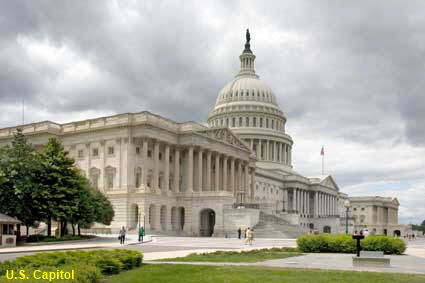
U.S. Capitol
Design of the Capitol was part of Pierre L'Enfant’s brief, but his dismissal in 1792 brought this to a halt. A competition failed to find a suitable design but later Dr. William Thornton, a Scottish physician living in the West Indies, submitted a design that was accepted. Construction of the Capitol began in 1793 but progress was slow. Although Washington DC became the capital of the USA in June 1800, the Capitol was still incomplete when the British sacked Washington DC in 1814. The end of the War of 1812 in 1815 saw work restarted on the much damaged Capitol and it was eventually completed in 1826. A major extension was completed in 1868 and at the same time the dome was replaced. This view shows the Capitol from Independence Avenue.
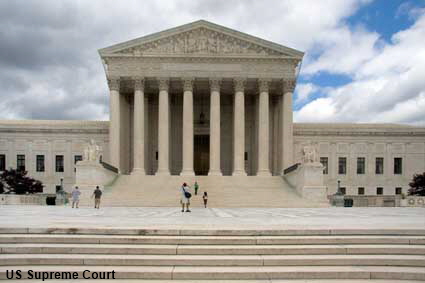
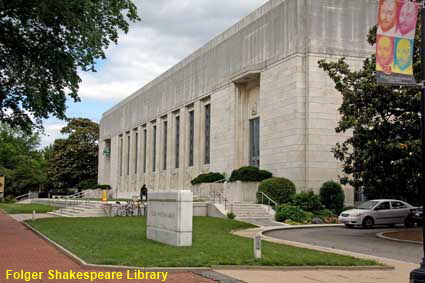
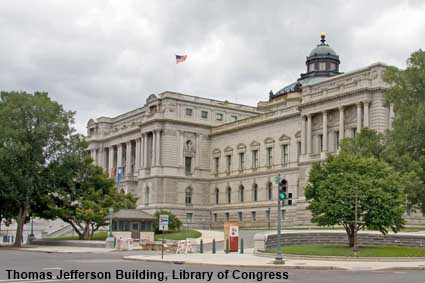
Sewall-Belmont House
Finally, an example of the historic houses to be found on Capitol Hill. Robert Sewall purchased land on Jenkins Hill in the 1790s to build a town house. The house was completed in 1800 and in 1801 it was rented to Albert Gallatin who was Secretary of the Treasury under Presidents Jefferson and Madison. Gallatin moved out in 1813 and in 1814 the house was burned by the British. Sewall rebuilt the house and moved in with his family in 1820, but later that year he died. The house was owned by his descendants until 1922 when it was sold to Senator Porter Hinman Dale of Vermont. In 1929 the National Woman’s Party purchased the House to use as their headquarters to lobby for women’s rights. They renamed it Alva Belmont House after their President and benefactor. After the house was listed on the National Register of Historic Places in 1972, it became known as the Sewall-Belmont House. The NWP still owns the house, using it as a museum and for educational purposes. The house is open for guided tours.
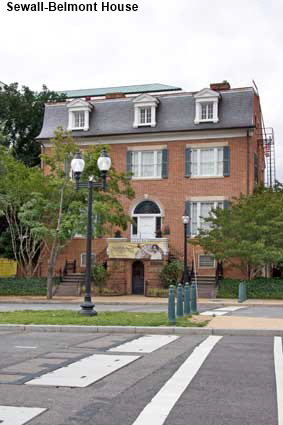


To move forwards or backwards through the Washington DC trail click the arrows above, or select your next destination on the Minimap.
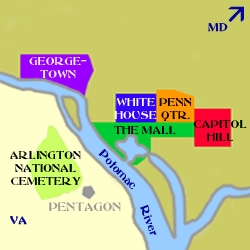

© Mike Elsden 1981 - 2025
The contents of this page may not be reproduced in full or in part without permission